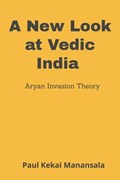Preview of book
Vedas are distinctly Indian documents taken from a definitely Indian milieu. There is no positive indication that some of the Vedas were composed in Afghanistan or elsewhere outside the subcontinent. Indologists claim that Vedic bards were subject to unspeakable curses and social sanctions for incorrect transmission of any hymn. The existence of a racial division is often suggested based on descriptions of enemy peoples as "dark" or "goat-nosed". The zebu and banteng were postulated as descendants of Bos primgenius indicus from Bos nomadicus.
They shared similarities in skin,coat, horns and head shape, and sometimes the shape of the dewlap. If Aryans brought their herds of cattle and their horses with them, one should expect an abundance of evidence in this area to support the AI theory. The horse of India including, that of the asvamedha sacrifice in what is regarded as the oldest part of the Rigveda, is native to southeastern Asia. All horses extending to insular Southeast Asia showed anatomical traces of admixture with the ancient equid known as Equus sivalensis. In the Ramayana and Mahabharata, Mt. Meru is a geographic reality located east of Jambudvipa (the Indian subcontinent). The oldest texts that give reasonably explicit views of extra-Indian geography are the epics.

